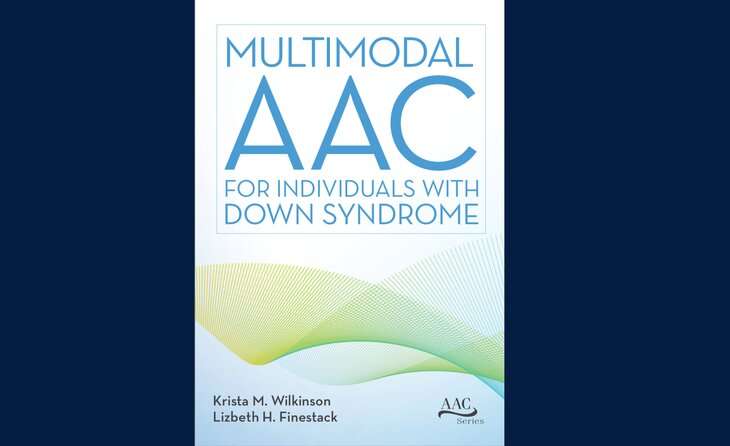New book on technology to support communication for people with Down syndrome

Individuals with Down syndrome often have intellectual disabilities and low vision or hearing, all of which can cause communication challenges, according to Krista Wilkinson, professor of communication sciences and disorders. Wilkinson recently co-edited a new book, "Multimodal AAC for Individuals with Down Syndrome," to help promote and support effective communication for individuals with Down syndrome.
For the hundreds of thousands of Americans who live with Down syndrome, language deficits traditionally are addressed through speech and language therapy. In addition to therapy that targets speech, there is a growing awareness in the research and clinical communities that many individuals with Down syndrome also benefit from the use of Augmentative and Alternative Communication (AAC) tools and techniques. AAC encompasses a wide variety of tools and interventions that can supplement or replace speech when speech cannot meet all of an individual's communication needs.
"For individuals with Down syndrome, there is an emphasis on their speech, and this is vital," explained Wilkinson. "But really, in order to promote self-advocacy, to promote social success, and to promote understanding, AAC can be critical.
"In schools, in healthcare settings, and in any transition periods of life, the ability to communicate effectively can be a source of great power. Conversely, an inability to communicate effectively can make someone very vulnerable. With this book, we want to make sure that each individual with Down syndrome has the tools they need to live as rich and empowered a life as possible."
A resource for many contexts
The book is designed to be used by a broad range of people who work or live with people who have Down syndrome, including teachers, school administrators, family members, employment case coordinators, guidance counselors, social workers, and nurses. In the United States, speech-language pathologists prescribe and design AAC, but getting the most out of AAC requires buy-in from educational professionals, health care providers, family members, and the individual who uses AAC.
"All of these people could look at this book and say, "Oh, here are some ideas that could help me communicate more effectively with my student, my employee, my patient, or my son." The book really is targeted for a wide audience," Wilkinson said.
Wilkinson and her co-editor, Lizbeth Finestack of the University of Minnesota, divided the book into three sections and identified the topics they felt were most useful to promote the uptake of AAC for individuals with Down syndrome in the real world. Then, the editors recruited nationally renowned specialists to write a chapter about each topic.
The first section of the book introduces the main concepts and provides important background information. The chapters introduce AAC, Down syndrome, communicating with individuals with Down syndrome, and how AAC can be used throughout the lives of individuals with Down syndrome.
The second section of the book delves more deeply into how AAC can be used during each phase of life. The first chapter in this section describes how AAC can be incorporated in early language interventions for young children. Subsequent chapters address AAC throughout development up to and including the use of AAC for individuals who are experiencing dementia or cognitive decline.
The third section of the book explores the use of AAC for specific situations and events. One chapter explains the role of AAC in family contexts, especially transitions where individuals with Down syndrome are reaching adulthood and are seeking more independence. Another chapter addresses the use of AAC in health care settings. The book's final chapter explores how AAC can be used to support literacy and access to technology. Each of these contexts presents real opportunities to improve the quality of life—and safety—of individuals living with Down syndrome.
"Just as an example of an application, I would love for nurses to read the chapter on healthcare," explained Wilkinson. "There's not a lot of AAC formally used in healthcare. We know that AAC is used in healthcare offices and clinics, but since they do not usually employ AAC specialists, the book could provide them with many practical ideas."
Individualized care for individuals
Individuals with Down syndrome are all different, and neither Wilkinson nor the book advocate a one-size-fits-all approach to using AAC. Some people need electronic speech generating devices, like the device that physicist Steven Hawking used to communicate. Other people can effectively communicate using low-tech solutions like books of picture symbols.
"AAC is not used for folks with Down syndrome at the level that it should be," said Wilkinson. "We should be considering this across the lifespan. It can support language development in little kids. It can support academic development in schools. It can support self-advocacy as people get older.
"When people reach age 21, there is often no longer an effort to support communication. This book is a call to arms that we should be using AAC at whatever level is needed or helpful for each individual. Society is waking up to the potential of individuals with Down syndrome, and AAC can help unlock that potential."
This volume is part of a series of books about AAC.
Provided by Pennsylvania State University